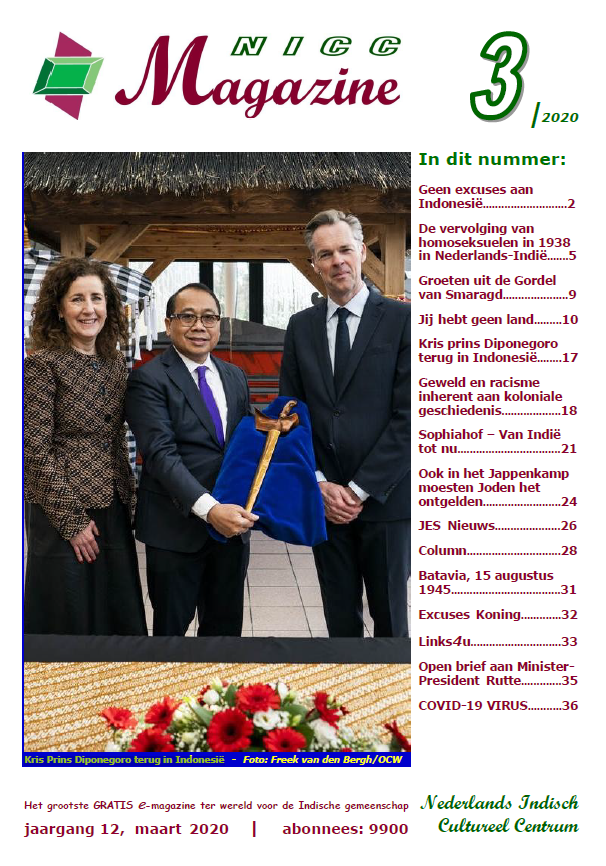Syaifuddin Zuhri has a name quite similar to the famous writer and pesantren leader Saifuddin Zuhri, father of Minister of Religion Lukman Hakim Saifuddin. But he is younger and probably has no connections to the two others mentioned above. Due to the corona virus, sitting at home, without access to the books of the libraries in Utrecht and Leiden, I read two articles, available through the internet.
The most fascinating was published in 2013 in
Indonesia and the Malay World (vol 41:1-13):
Inventing Balinese Muslim Sainthood. Parallel to the Nine Founders of Islam in Java, the
Wali Songo, Zuhri wrote about seven graves in Bali, signs of a long history of Islam. The first is in Gèlgèl, where in 1380 a Muslim trader arrived and was given an area to stay. A second arrived in 1580 in Klungkung, in 1609 there was a report of a few Muslims from Goa, Buginese who settled in Jembrana. In 1992 a tradition of
Wali Pitu was invented/created by one Toyib Zaen Arifin (1925-2000), who had a pesantren in Sidoarjo, but also spread the Qadiriya tariqa and the Manaqib of Abdulqadir Jaelani to Bali. He heard voices,
hâtif, about 1. a Muslim grave close to Tanah Lot; 2. in Bedugul, 3-5 in Karangasem; 6. Singaraja (of a Chinese Muslim; 7. of someone of Arab descent in Loloan.
Above here the seven Muslims buried in a
maqam in Bali, with bottom left Toyib Zaen Arifin who discovered the graves. - There is a modest number of activities close to the simple graves, nothing similar to the crowds in Surabaya, Ampel, but maybe it will rise again. Of the 3,5 million citizens of Bali 10% is Muslim.
A second article by Syaifuddin Zuhri is about the 'infiltration of Salafi Muslims in moderate mosques'. The case here is about Masjid al-Muttaqun in Prambanan, Central Java. It was built in the 1950s at the initiative of the court of the Sunan of Solo and led by Muhammadiyah people. Due to the earthquake of 26 May 2006 the Aisyah School next to the mosque was destroyed. PKS leader Hidayat Nur Wahid, born in Prambanan and chair of parliament since 2004 took this opportunity to have a PKS individual to be nominated a major leader of the mosque, the prevent rebuilding of the Aisyiyah school and instead to extend the existing mosque into an Islamic Centre, financed by gifts from Kuwait. Muhammadiyah teachers were given higher salaries at the PKS Islamic Centre. Its leader received a free ticker for the haj pilgrimage. The Muhammadiyah also took action: national leaders like Amin Rais and Chamamah Suratno were present at ceremonies and an action of
bersih-bersih (to clean the institutions from Salafi/PKS influence) had some success. After some time the full board of the Muttaqun mosque had become united as Muhammadiyah Members.
The dominant colour of the Muttaqun mosque in Prambanan in now brown (PKS colour), while Nahdlatul Ulama mosques are mostly white and Muhammadiyah prefers green.
The father of Hidayat Nur Wahid was a staunch Muhammadiyah leader, but his son, although educated in Muhammadiyah schools, before going to Gontor and then to Medina, got the 'tarbiyah virus' and became a prominent leader of PKS. Story to be continued!
(On Al-Muttaqun from Kees van Dijk & Nico Kaptein (eds),
Islam, Politics and Change, Leiden Univ. Press. 2016, 79-100.)
 Above a drawing of Diponegoro with his kris and the issue of the magazine of the Eurasian people in the Netherlands with Dutch minister of Education and Culture (left) and the Indonesian Ambassador in the Hague, I Gusti Agung Wesaka Puja (centre) during the ceremony in early March 2020.
Above a drawing of Diponegoro with his kris and the issue of the magazine of the Eurasian people in the Netherlands with Dutch minister of Education and Culture (left) and the Indonesian Ambassador in the Hague, I Gusti Agung Wesaka Puja (centre) during the ceremony in early March 2020.







